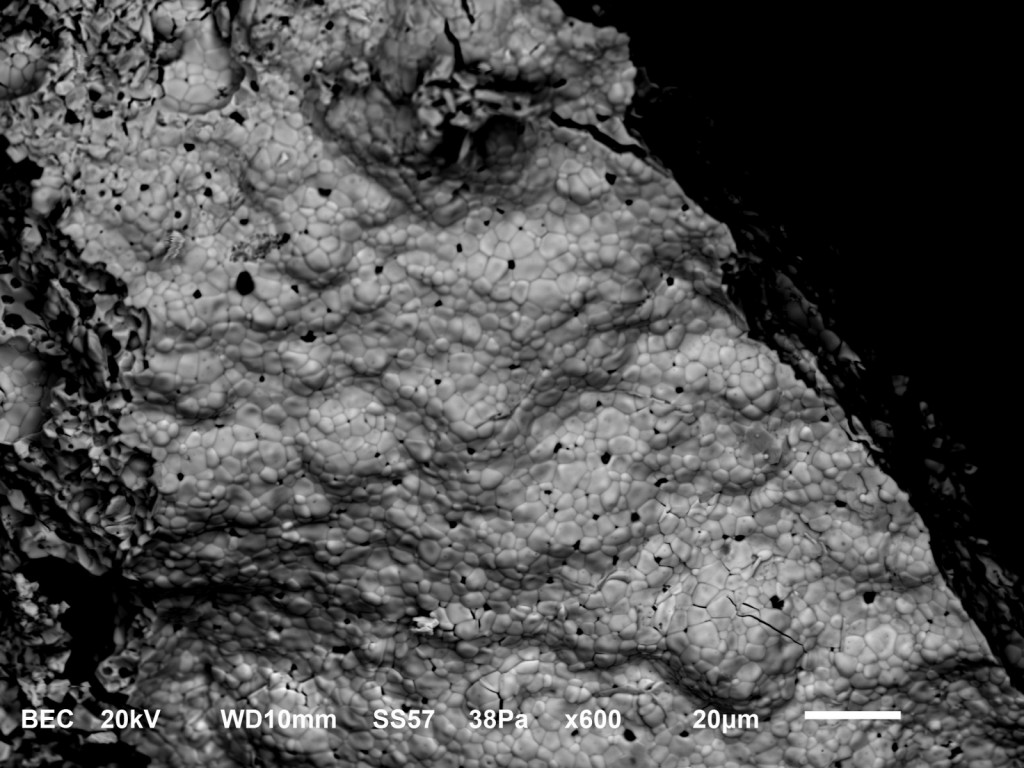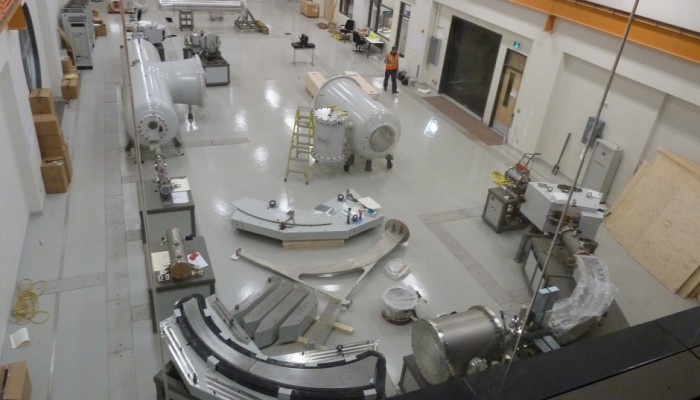 I occasionally like to focus in on what I view as a key paper either in my particular field of iodine geochemistry or in the geochemical world at large. In this instance I have decided to highlight a paper in my field that releases a fantastic wealth of data that is matched nowhere else in the literature I have seen. This paper also reflects incredible dedication and planning to answer a scientific question that far exceeds that of most papers in terms of patience and structure. The reason I say this is because most datasets in papers today may reflect a few years of sampling. In my opinion the average is around 2-5 years of data for papers that concern modern processes. This is great, however, datasets such as this only represent a small snapshot of these processes and do not allow one to observe long term trends with much confidence. Indeed, most of these papers finish by saying more data is needed to reach conclusions about long term changes. The reason for this is usually money, grad students wanting to finish, etc. These are good reasons, particularly the latter, which I can really empathize with, however, the problem is that such short time periods are not really long enough to make robust conclusions about changes in the environment or that factors that are causing such changes. Most researchers overcome their piddly datasets by adding in the work of others to broaden their time periods. Obviously, there are problems with doing this such as differences in sampling location, sampling techniques, lab practices…the list goes on and on with reasons why two datasets from different researchers may not be exactly comparable. This practice is very common nonetheless. However, rarely papers come out that present many years worth of data all analysed by the same person, in the same place, and collected the same way. Such datasets are invaluable in the geochemistry world! The paper I review here is such a paper. In fact, it presents data for a 40 year period!!
I occasionally like to focus in on what I view as a key paper either in my particular field of iodine geochemistry or in the geochemical world at large. In this instance I have decided to highlight a paper in my field that releases a fantastic wealth of data that is matched nowhere else in the literature I have seen. This paper also reflects incredible dedication and planning to answer a scientific question that far exceeds that of most papers in terms of patience and structure. The reason I say this is because most datasets in papers today may reflect a few years of sampling. In my opinion the average is around 2-5 years of data for papers that concern modern processes. This is great, however, datasets such as this only represent a small snapshot of these processes and do not allow one to observe long term trends with much confidence. Indeed, most of these papers finish by saying more data is needed to reach conclusions about long term changes. The reason for this is usually money, grad students wanting to finish, etc. These are good reasons, particularly the latter, which I can really empathize with, however, the problem is that such short time periods are not really long enough to make robust conclusions about changes in the environment or that factors that are causing such changes. Most researchers overcome their piddly datasets by adding in the work of others to broaden their time periods. Obviously, there are problems with doing this such as differences in sampling location, sampling techniques, lab practices…the list goes on and on with reasons why two datasets from different researchers may not be exactly comparable. This practice is very common nonetheless. However, rarely papers come out that present many years worth of data all analysed by the same person, in the same place, and collected the same way. Such datasets are invaluable in the geochemistry world! The paper I review here is such a paper. In fact, it presents data for a 40 year period!!
The paper is by the AMS research group in the department of chemistry at Gakushin University in Tokyo, Japan. The authors are: Chiaki Toyama, Yasuyuki Muramatsu, Yuka Uchida, Yasuhito Igarashi, Michio Aoyama, and Hiroyuki Matsuzaki.
Why 129I
I thought this might be a good introductory section to add in order to bring everyone up to speed on what the value of researching 129I is. The main reason is that 129I levels are continually increasing globally and it is an emerging contaminant which we don’t want our environment, particularly 129I, which we don’t understand very well. The next reason is that we are still learning how iodine and 129I behave in the environment. They are tricky little elements that just won’t stay put no matter what the chemical conditions. Therefore, we need to better understand how they move and over what time scales. Lastly, 129I is produced by nuclear reactors and is present in large amounts in radioactive waste. This means that when we dispose of it and store it there is a very mobile isotope in there with a 16 million year half life. It is essential that we understand how it behaves and where it comes from.
Purpose
The purpose of this paper, that is to say the research questions that they authors are attempting to answer is:
1. What variations exist in the fallout rate of iodine-129 over time in Tokyo and what factors influence this fallout?
2. What are the sources of 129I in Tokyo?
3. How have nuclear accidents, such as Chernobyl, affected 129I concentrations in Tokyo?
4. What is the background concentration of 129I in Tokyo?
Sampling Methods
The samples were collected by the Japanese Meteorological Research Institute. Precipitation and particulate fallout samples were collected on a monthly basis from 1963 to 2003 and iodine was extracted as silver iodide and analyzed using accelerator mass spectrometry. Total iodine was analyzed with ICP-MS.
Results and Discussion
Unfortunately I cannot reproduce any figures from the paper…even though it has a graphical abstract…since Elsevier wants to charge me $20/figure to use them.
Anyway, I’ll make do without and try and describe the results without being too long winded.
– The 129I/127I ratio increased drastically during the 70’s and 80’s. It peaked at 4 orders of magnitude, or 10,000 times higher than the pre-anthropogenic ratio of 1.5 x 10^12. This increase is likely initially due to bomb testing, but the steady increase through the 80’s, which post dates most bomb testing means there is another cause.
– The deposition of 129I initially mimics the deposition of strontium-90 and cesium-137, both produced exclusively by bomb testing and nuclear reactor accidents. However, over time the 90Sr and 137Cs inputs decrease while the 129I remains steady. Also, there is a visible Chernobyl pulse for 90Sr and 137Cs, but not for 129I, although this is mainly since very little 129I was released from Chernobyl.
– The authors then compare the 129I deposition to the releases of 129I from the nearby Tokai Reprocessing Plant. The correlation is excellent. In order to guage the influence of European reprocessing plants the authors compared their results to another study looking at 129I in ice cores from the Alps, which found that there was a strong relationship to reprocessing releases. The Japanese deposition fluxes did not match the European very well. The suggests that 129I deposition in Tokyo is mainly from the Tokai plant.
– There was a consistent seasonal variation in 129I deposition in Tokyo. Indeed, the deposition of 129I was about 2 times higher in the spring than in the fall. This is consistent with other studies that have noticed a “spring peak” in radioactive fallout in mid-latitude regions. This is explained by a change in stratosphere-troposphere mixing in the spring (I have the reference if you want it). However, the authors also note that the air mass above Tokyo in the spring comes from Europe the higher levels could represent an influence of the European or Russian fuel reprocessing plants.
Conclusions
The principle conclusions of this article are:
1. The current ratio of 129I/I in atmospheric fallout is 10,000 times higher than the pre-anthropogenic, natural 129I/I ratio. This is primarily due to atmospheric weapons testing in the 1950’s and 60’s.
2. There is no detectable influence of the Chernobyl accident in atmospheric fallout in Tokyo. This is likely because the signal is hidden rather than not present.
3. The high deposition of 129I in the 1980’s is due to the influence of the nearby Tokai Nuclear Fuel Reprocessing Plant. There is no correlation between 129I and 137Cs and 90Sr, which indicates the recent rise in 129I concentrations are not due to bomb testing.
4. There is also a possibility of distant transport of 129I from overseas reprocessing facilities in Europe, Russia and China and the authors intend to assess this by carrying out further sampling in places throughout Japan.
These conclusions are not especially novel. Many other papers have clearly demonstrated the impact of nuclear fuel reprocessing on 129I fallout and the ease with which 129I can be transported atmospherically. Indeed, I have published a paper demonstrating this in the Yukon Territory. However, most papers, mine included, do not present the quantity of data to verify this conclusion that this one does. This makes this paper a fantastic addition to the body of 129I literature as well as provides an excellent starting point for future conclusions about changes in 129I fallout with time and the factors responsible for them. It also provides excellent context for future work. It is difficult to put 129I deposition fluxes in context over time and this data set opens that door.
Some Speculation
So many papers come out every day in the research community. I have often wondered what each one represents financially. I mean, how much does it cost to produce all this research? How much do the analyses cost, the sampling, the preparation, the time, the analytical equipment? None of these components is cheap, except maybe the grad student hours, and therefore, every paper that comes out represents a substantial financial investment on the part of the supervisor and the funding agencies. So I thought it might be an interesting thought experiment to guess what this paper may have cost to produce. I have no actual knowledge regarding what this paper cost to produce, but I can speculate a bit since I am familiar with the cost of AMS analysis and lab work. So here is my very, very rough cost breakdown. It is likely on the low side though since I am not going to factor in human labour hours, the cost of sampling, or the cost of using the lab equipment besides the AMS.
# of Samples: 80
AMS sample prep: ~$75/sample = $6000
Cost of AMS analysis per sample: ~$250/sample = $20,000
Cost of ICP-MS per samples: ~$25 x 80 = $2000
Grand Total: $28,000
I believe that the paper is sadly trapped behind a paywall. Therefore, if you would like to read the paper in full let me know in the comments below and leave me your email so I can pass it on to you.
Thanks for reading! If you have any questions or concerns I’d love to hear from you. Also, if you have an opinion on the paper or dataset I’d love to hear it as well
Citation
Toyama, C., Muramatsu, Y., Uchida, Y., Igarashi, Y., Aoyama, M., & Matsuzaki, H. (2012). Variations of 129I in the atmospheric fallout of Tokyo, Japan: 1963–2003 Journal of Environmental Radioactivity, 113, 116-122 DOI: 10.1016/j.jenvrad.2012.04.014
Matt
claimtoken-50c9c98387ace















